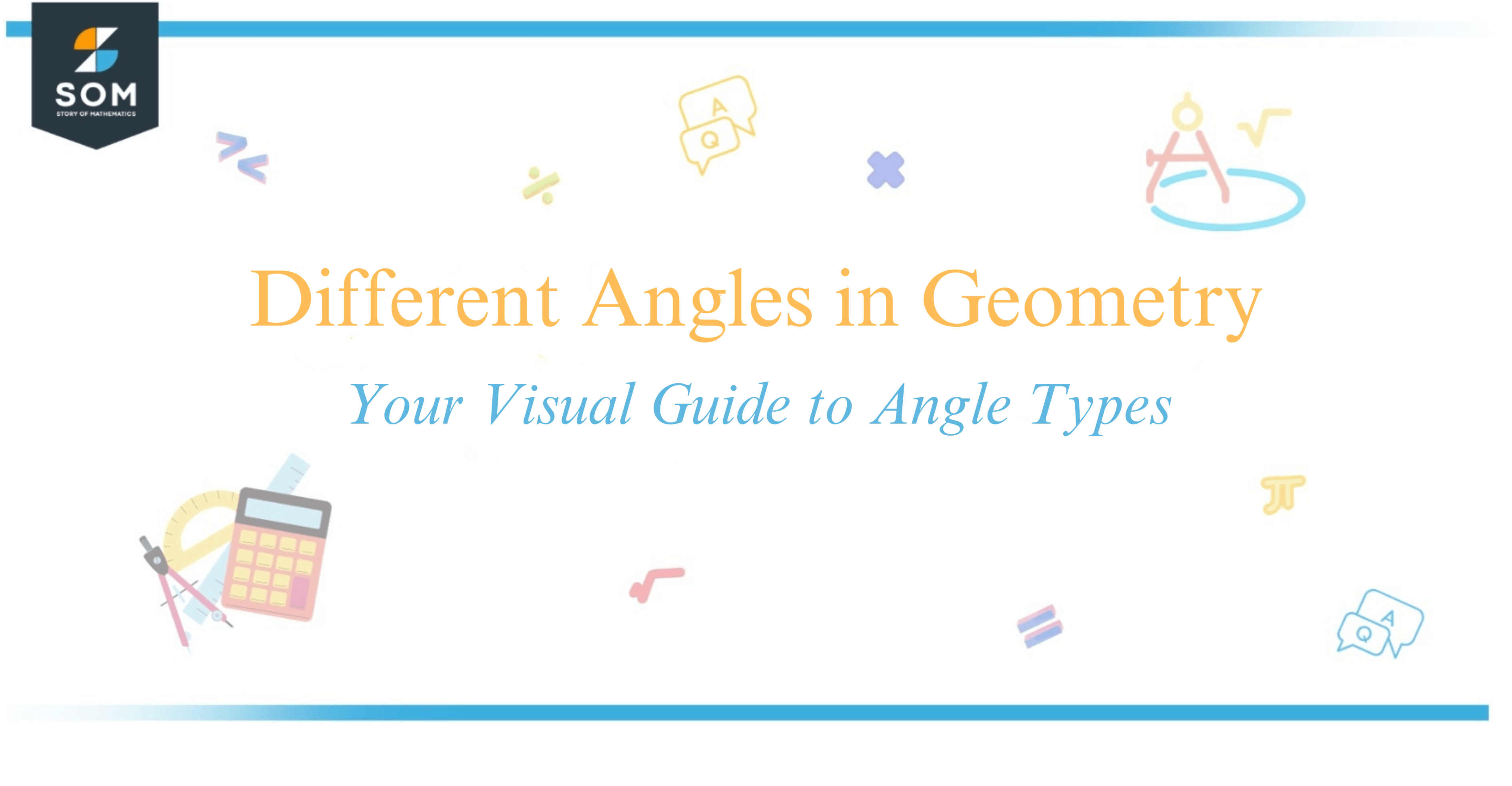
Geometry is the branch of mathematics that deals with the properties and relationships of points, lines, surfaces, and solids.
A fundamental concept within geometry is the angle, which forms when two rays (the arms of the angle) meet at a common endpoint known as the vertex.
The measure of an angle is often expressed in degrees (°), a unit that quantifies the turn or rotation from one arm to the other, using a full circle’s rotation equal to $360^\circ$.
The study of angles is integral to understanding geometric shapes and principles, as well as their application in various fields such as engineering, architecture, and astronomy.

Different types of angles have distinct characteristics and are categorized based on their measure.
For instance, an acute angle measures less than $90^\circ$, whereas a right angle is exactly $90^\circ$. But geometry doesn’t stop there—it includes the wider and often less intuitive obtuse angle, which spans between $90^\circ$ and $180^\circ$, and the straight angle at exactly $180^\circ$ that appears as a straight line.
The classification continues with the reflex angle, more than $180^\circ$ but less than $360^\circ$, and finally, the complete turn of a full rotation, measuring exactly $360^\circ$.
My goal is to guide you through each of these angles with clear images that help encapsulate their properties and differences.
Whether you’re a student, educator, or just keen on brushing up your math skills, join me in exploring the diverse world of angles in geometry.
Types and Properties of Angles in Geometry
In geometry, an angle is formed when two rays meet at a common endpoint, known as the vertex.
I’ll outline the basic types of angles and their properties that are foundational not just for geometric proofs, but for understanding the relationships in structures from a triangle to a parallelogram, and in the design of buildings, roads, and sporting facilities.
The Acute Angles: These are angles measuring less than $90^\circ$. Imagine the sharpness of a pizza slice which typically forms an acute angle.
| Angle Type | Degree Measure | Property |
|---|---|---|
| Acute | $<90^\circ$ | Sharp and narrow |
Right Angles are the cornerstones of geometry and are exactly $90^\circ$. You encounter them in the corners of a square and the uprights of buildings.
| Angle Type | Degree Measure | Property |
|---|---|---|
| Right | $=90^\circ$ | Perfectly perpendicular |
Obtuse Angles measure between $90^\circ$ and $180^\circ$. These are wider and appear more blunt, similar to the spread fingers of an open hand.
| Angle Type | Degree Measure | Property |
|---|---|---|
| Obtuse | $90^\circ< \text{angle} <180^\circ$ | Broad and wide |
Straight Angles stretch out to exactly $180^\circ$, resembling a straight line, as seen in the opposite sides of a parallelogram.
| Angle Type | Degree Measure | Property |
|---|---|---|
| Straight | $=180^\circ$ | Line-like |
Reflex Angles are the larger ones, measuring between $180^\circ$ and $360^\circ$. They appear when you extend a straight angle.
| Angle Type | Degree Measure | Property |
|---|---|---|
| Reflex | $180^\circ< \text{angle} <360^\circ$ | Greater than a straight line |
Finally, a Full Rotation Angle is $360^\circ$, symbolizing a full circle’s turn.
Angles work together in various ways. For example, adjacent angles share a common ray and vertex, vertically opposite angles are equal when two lines intersect, and interior and exterior angles of polygons have special relationships that determine their properties. Complementary angles add up to $90^\circ$ and supplementary angles sum to $180^\circ$. These properties are essential in the construction and analysis of everything from simple triangles to complex sporting facilities.
Measuring and Working with Angles
When I approach the task of measuring angles, I employ a protractor, an essential tool that enables accurate readings in degrees.

The unit of degrees is a way to quantify the magnitude of the angle, where a full circle encompasses $360^\circ$. A protractor typically has a scale from $0^\circ$ to $180^\circ$, allowing for precise measurement of an angle’s rotation from the initial side to the terminal side.
Angles can also be measured in radians, where $2\pi$ radians equals $360^\circ$. The conversion between these units is vital for engineers and architects, who often need to switch between them depending on the context of their work.
To measure an angle using a protractor:
- Place the midpoint of the protractor at the vertex of the angle.
- Align the protractor’s baseline with the initial side of the angle.
- Read the scale where the terminal side crosses the protractor.
For those who are learning or teaching angle measurement, practice problems, and worksheets are great tools for mastering these skills. These activities may involve finding the magnitude of an angle, understanding angle measurement concepts, or determining the direction of rotation.
| Practice Topic | Description |
|---|---|
| Angle Measurement | Reading angles using a protractor. |
| Degrees and Radians | Converting between degrees and radians. |
It’s important for practitioners, like engineers or architects, to grasp these concepts as they often inform crucial decisions in their designs. For students, practicing these skills is fundamental for geometry classes.
Conclusion
In my exploration of angles in geometry, I’ve covered the essential types found in mathematical studies and everyday life. Each angle holds significance for its properties and applications.
From the sharpness of an acute angle (less than $90^\circ$) to the completeness of a straight angle ($180^\circ$), our understanding of the world’s shapes hinges on these fundamental concepts.
The right angle, precisely $90^\circ$, is foundational in construction and design. While the obtuse angle spans between $90^\circ$ and $180^\circ$, it often appears in architectural features and art.
I’ve enjoyed sharing how these various angles interact to form the patterns and structures all around us.
Geometry isn’t just about static images; it’s the dynamic interplay of shapes and spaces.
When I think of angles, I see the building blocks of our universe—the corners of a room, the tilt of a roof, and even the hands of a clock, all of them making our world a more structured and understandable place. Thank you for joining me in uncovering the simple yet profound world of angles.
